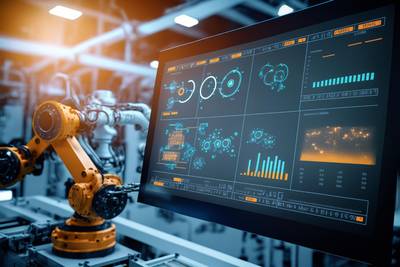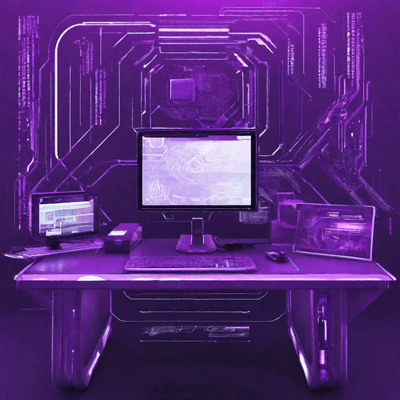Headless CMS is a content management system that allows you to store, manage and deliver content without direct connection with the presentation layer, i.e. how the content is displayed to users. Thanks to this architecture, content can be easily shared via API to any device or channel, such as websites, mobile applications, wearables and even IoT (Internet of Things) devices, giving you complete freedom in choosing front-end technology.
In traditional content management systems (CMS), the content presentation layer is closely related to the content management layer, which often limits the possibilities for customization and scaling. In the case of a headless CMS, content is delivered as a service (Content as a Service, CaaS), which allows it to be used in many places from a single source, without the need for repeated creation and customization.
Why should you consider a headless CMS?
Organizations that decide to implement a headless CMS often see significant benefits such as:
- Increasing the loading speed of pages and applications, which can contribute to better positioning in search results and higher conversions.
- Flexibility to customize user interfaces, allowing you to create more engaging and personalized experiences for users.
- Simplifying content update and publication processes, saving time and resources.
When choosing a headless CMS, it is important to thoroughly understand the needs of your users and the technical and business requirements of the project. Not every company needs the flexibility and scalability offered by a headless CMS. For some, traditional solutions may still be sufficient. However, in environments where quick adaptation to changing market conditions and customer expectations is very important, a headless CMS can turn out to be a real game changer.
Headless CMS vs. Traditional CMS
Comparing a headless CMS to traditional content management systems shows how different the approaches to publishing and managing online content can be. Traditional CMS, such as WordPress or Joomla, are integrated systems in which content management and its presentation are closely related. Headless CMS, on the other hand, separates these two layers, which offers new possibilities for content delivery.

Basic differences
The main difference between headless and a traditional CMS lies in the architecture. Traditional CMSs combine the back-end (content management) with the front-end (content presentation), which limits the flexibility to customize and optimize the user experience across platforms. In a headless CMS, content is available via API and can be displayed on any platform, enabling a more personalized and consistent experience for users.
Advantages of headless CMS over traditional ones
- Flexibility and scalability: By separating the presentation layer, headless CMS makes it easier to make changes to the design and adapt the content to various channels without having to interfere with the source code of the system.
- Loading speed: Headless CMS-based sites often load faster because the code can be better optimized for different platforms, resulting in a better user experience and potentially higher rankings in search results.
- Security: Separating the data layer from the presentation layer can increase security by reducing the risk of cross-site scripting (XSS) attacks and other UI vulnerabilities.
Companies that decide to switch from a traditional CMS to headless can expect not only improved page loading speeds and better security, but also increased content reach. The ability to publish content on various platforms and devices without additional work is a huge advantage, especially for global companies or those that want to be closer to their customers through mobile applications, smartwatches or other smart devices.
Headless CMS and Decoupled CMS - Differentiation of Concepts
Frequently asked questions concern the difference between headless CMS and decoupled CMS. Although both terms may sound similar and are related to modern approaches to content management, significant differences between them determine their unique advantages and applications.
Headless CMS is a content management system that completely separates the content presentation layer from the content management layer. Access to the content is possible via API, which allows its use on any platform or device without the need to adapt the content to the specific technological requirements of the front-end. Thanks to this, you can easily deliver content to a variety of channels, from websites to mobile applications, while maintaining full control over the way it is presented.
Decoupled CMS , on the other hand, is a system in which the content management layer and the presentation layer are separated, but there is a clear connection between them. This system often offers dedicated interfaces for presenting content that are tailored to specific platforms, while maintaining the ability to manage content from one place. This solution combines flexibility in delivering content with the convenience of having ready-made tools for publishing it.
The distinction in practice
The main difference between headless and decoupled CMS is the way content is delivered. Headless CMS is more flexible because it allows developers complete freedom in choosing the technologies used on the front-end. This is an ideal solution for companies that want to experiment with new content distribution channels or need to quickly adapt to changing technological trends.
When choosing one of these systems, it is also worth considering future content management needs. Investing in a system that allows you to easily adapt to changing requirements and trends can bring long-term benefits to your business, especially in a rapidly changing world.
How does Headless CMS work?

Headless CMS is a content management system that allows you to store, manage and deliver content without a directly associated frontend. It works via API, which means that content can be delivered to any device or channel without having to adapt it to a specific presentation environment.
At the heart of Headless CMS is the API (Application Programming Interface), which enables separate management of content and its presentation. Thanks to this, content can be created, edited and stored in a central place, and then used by various platforms - from websites to mobile applications. This API, usually RESTful or GraphQL, serves as a bridge between the content store and where it will be displayed.
Almost 65% of marketers value the flexibility offered by headless CMS, allowing them to quickly adapt to changing trends and technologies. However, error in selecting the appropriate API can lead to integration and performance issues. It is important to thoroughly understand the needs of the project before making a decision.
Why choose Headless CMS?
Choosing a Headless CMS can bring a number of benefits to organizations that want to flexibly manage content and deliver it to various platforms. Thanks to its structure, headless CMS enables content unification in one place, team collaboration, increased reusability and scalability, as well as shortened project development times.

Unification of Content in One Place
By using Headless CMS, companies can centralize their content resources, making it easier to manage, update and reuse content across various distribution channels. This centralization helps maintain brand and messaging consistency across a company's digital ecosystem. However, it may be a mistake to ignore the need to carefully plan your content structure, which may result in accessibility and performance problems.
Enabling Collaboration in Teams
Headless CMS supports collaboration between different teams - from marketing to product development - enabling simultaneous work on content and its distribution. Thanks to this, these processes become more effective and the risk of duplicating work is minimized. However, it is important to provide all users with appropriate training and resources so that they can fully use the system's potential.
Increasing Reusability and Scalability
Storing content separate from presentation allows it to be easily reused in different contexts and on different platforms. This, in turn, significantly increases the scalability of projects, enabling quick adaptation to new distribution channels. However, it is important to design the content in a modular way from the very beginning, which will enable its flexible use.
Omnichannel
Integration with a headless CMS allows you to easily adapt your content strategy to the needs of your omnichannel strategy, ensuring a consistent user experience across all platforms and devices. This opens up new opportunities for companies to reach customers and increase their engagement. However, it is important to remember about the need to constantly optimize user experience, which requires regular research and testing.
Reduced Development Times
By separating the presentation layer from content management, development teams can work more efficiently, which shortens the overall time needed to develop and implement new functions or services. However, a mistake may be insufficient involvement of the development team in the initial phases of the project, which may lead to misunderstandings and delays.
Composability
The composite architecture enabled by Headless CMS allows you to build complex applications from ready-made blocks, which significantly accelerates project development and enables quick adaptation to changing market needs. However, it is important to ensure the high quality and safety of the components used.
Greater security
Separating the frontend from the content management system can increase data and content security. Without a direct connection between the presentation layer and the database, the risk of XSS (Cross-Site Scripting) or SQL Injection attacks is significantly reduced. However, it is important not to forget to regularly update the API and monitor the system for potential threats.
Future Ready
Adopting a Headless CMS prepares organizations for future changes in technology and consumer trends. Thanks to the modular and flexible architecture, companies can more easily innovate and adapt to new market requirements without having to redesign the entire system from scratch. However, the key here is to keep the system constantly ready for quick updates and adaptations.
When to use Headless CMS?
The decision to use Headless CMS depends on the specific needs of the project, business goals and technology requirements. There are several situations where choosing such a system can be particularly beneficial, offering greater flexibility, better scalability and faster adaptation to changing technology trends.
You need flexibility in delivering content
If your company aims to deliver content to various platforms - such as mobile applications, websites, or even virtual experience systems - Headless CMS will be the perfect solution. By separating content from the presentation layer, you can easily distribute the same content in different formats and across devices, while ensuring consistency and quality of user experience.
A mistake in this context would be to maintain a strong link between content and a specific presentation platform, which may limit the company's ability to quickly respond to new content distribution opportunities.
You are planning rapid scalability of the project
For projects that need to grow and scale quickly - both in terms of content volume and diversity of distribution channels - Headless CMS offers the necessary flexibility and efficiency. Thanks to the centralization of content management, it is easier to manage an increased amount of content, as well as introduce new functionalities or distribution channels without having to rewrite the code from scratch.
One common mistake here is underestimating the complexity of content management as the project scales, which can lead to inefficiencies and increased operational costs.
You want to shorten the time to introduce changes and innovations
Companies that want to quickly introduce new products, services or functionalities to the market benefit from using Headless CMS. Separating content from the presentation layer allows development teams to work independently on new features, without the need to interfere with the content management system. This can significantly shorten the time needed to develop and implement new ideas.
However, skipping testing and quality control in the innovation process, even when using a headless CMS, can lead to system performance problems and negatively impact user experience.
You want to increase security
Choosing a Headless CMS can help increase the security of web and mobile applications. By separating the backend (content management) from the frontend (content presentation), the risk of hacking attacks targeting the user interface, such as Cross-Site Scripting or SQL Injection, is reduced.
However, it is important to remember that the security of a system depends not only on its architecture, but also on regular updates, monitoring and application of best security practices.
You want to improve the content creator experience
Headless CMS can significantly improve the experience of those responsible for creating content. Thanks to intuitive interfaces and flexible tools, creators can focus on the quality and value of the delivered materials without worrying about the technical aspects of their publication. This is especially important for distributed or remote teams that need effective and flexible collaboration solutions.
Remember, however, that the effectiveness of tools depends on their adaptation to the specific needs and work processes in the organization. Not every system will be suitable for every team, which is why the process of selecting and adapting the headless CMS functionality to individual requirements is so important.
How to choose the right Headless CMS?

Define your needs and expectations
The first step is to thoroughly define the business and technical needs of your project. Determine what types of content you will publish, what distribution channels you intend to support, and what your requirements are for system scalability and flexibility. It's also important to consider the needs of the team responsible for creating and managing content.
A mistake at this stage may be an overly general approach to the definition of needs, which may lead to the selection of a system that will not fully meet expectations.
Evaluate your options
After defining your needs, analyze the Headless CMS systems available on the market. Pay attention to aspects such as API availability and flexibility, support for various types of content, integration possibilities with other tools, and user ratings and opinions. It's important to check whether your potential CMS offers support and documentation that will be helpful to you.
Skipping the stage of thoroughly assessing the available options and relying solely on the popularity of the solution may be a mistake that will result in later difficulties in implementing the project.
Check integration possibilities
In today's complex ecosystem, it is important to be able to integrate Headless CMS with other systems and tools, such as e-commerce, CRM, analytical systems or marketing automation tools. Make sure that the system you choose allows easy integration with key technologies for your project.
Ignoring this aspect may lead to limitations in the future, especially when the project grows and new integration requirements arise.
Consider flexibility and the future
When choosing Headless CMS, it is worth thinking long-term. Consider whether the system will be able to keep up with the growing and changing demands of your project. Flexibility in adapting content models, the ability to expand functionality via API and the readiness of the system to support new distribution channels are key aspects worth considering.
Taking a short-sighted approach and choosing a system that meets current but not future needs may turn out to be a costly mistake that requires later migration to another solution.
Check out the support and community
Good technical support and an active user community can be invaluable, especially when you encounter difficulties or need inspiration to develop your project. Check what resources are available, whether there are active discussion forums, and how quickly the system manufacturer responds to queries and problems.
Ignoring the importance of technical support and user community when choosing a Headless CMS may result in difficulties in solving technical problems and less flexibility in adapting the system to changing project needs.
Pay attention to the costs
The costs of implementing and maintaining a Headless CMS can vary significantly depending on the solution chosen. When analyzing costs, consider not only the initial price, but also the potential costs of expansions, integrations, and future scaling. The optimal solution should offer a good price-to-performance ratio and expected benefits.
Failure to conduct a thorough cost analysis can lead to unexpected future expenses that may impact the project budget and overall investment profitability.
Try before you buy
Many Headless CMS systems offer trial periods or demo versions that allow you to try out the functionality firsthand before making a final decision. By using this option, you can better assess whether a given system meets your expectations, how intuitive the interface is for users and how the system copes with managing and delivering content.
Skipping the testing stage and basing your decision solely on specifications or the opinions of others may result in choosing a system that will not be fully compatible with your team's requirements and work processes.
Frequently Asked Questions
What is Headless CMS?
Headless CMS is a content management system that allows you to store, manage and deliver content without a direct connection to the presentation layer, providing greater flexibility in distributing content to various platforms.
Who is Headless CMS intended for?
Headless CMS is an ideal solution for companies and development teams that need a flexible content management system that allows for easy customization and distribution of content across multiple platforms and devices.
What are the main advantages of Headless CMS?
The main advantages are: flexibility in content distribution, ease of integration with various platforms, improved security by separating the presentation layer, as well as increased efficiency and speed of content loading.
How to choose the right Headless CMS?
When choosing Headless CMS, you should pay attention to the specific needs of the project, the possibility of integration with other systems, the flexibility and scalability of the solution, and the availability of technical support and documentation.

Adam Naworski



